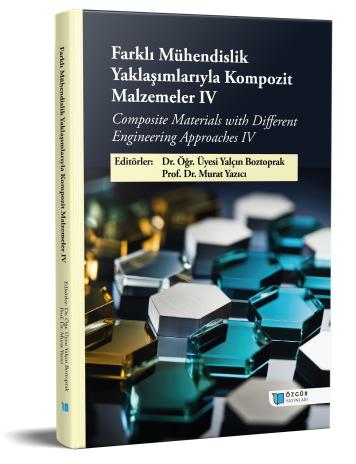
Manufacturing of Ceramic Materials With 3D Selective Laser Melting and Analysis of Their Possible Applications for Ballistic Purposes
Şu kitabın bölümü:
Boztoprak,
Y.
&
Yazıcı,
M.
(eds.)
2023.
Farklı Mühendislik Yaklaşımlarıyla Kompozit Malzemeler IV.
Özet
Selective laser melting (SLM) or selective laser sintering (SLS) methods are part of additive manufacturing techniques that involve work on a wide range of materials, including ceramic materials. Moreover, SLM is known to be able to produce customized components of various materials such as metal, ceramics and polymers and hence is a popular manufacturing method. Studies emphasize that these techniques also have potential for analysis of possible applications for ballistic purposes. Just as there are studies examining the mechanical properties of ceramic materials produced by the selective laser melting method, there are also studies on the marginal compatibility of ceramics used in the creation of ceramic plates.
The development of advanced ceramic materials for ballistic applications has been a topic of interest in the defense industry. Metals, ceramics and composite materials are generally used in personnel and vehicle armor applications. However, today, composite or hybrid composite designs come to the fore as a result of evaluating the level of protection together with the weight parameter. When the literature is examined; It shows that additive manufacturing techniques can also be used in the production of ceramic materials and therefore are preferred in armor production. In the study where the literature is examined in detail, it is emphasized that the most popular materials of ceramics in recent years are alumina and zirconia, which are among the main engineering material groups. Al2O3 is widely used as ceramic material in various industrial sectors, exhibiting high strength, hardness and excellent dielectric properties. On the other hand, ZrO2 is often added to increase the toughness and wear resistance properties of ceramic composites, making it a valuable addition to ceramic formulations. The combination of Al2O3 and ZrO2 has demonstrated promising results in improving the mechanical and ballistic properties of functionally graded materials, increasing fracture resistance and wear properties. In this study, a general evaluation of the studies in the existing literature is presented on the production of ceramic materials by 3D Selective Laser Melting and the analysis of their possible applications for ballistic purposes.

